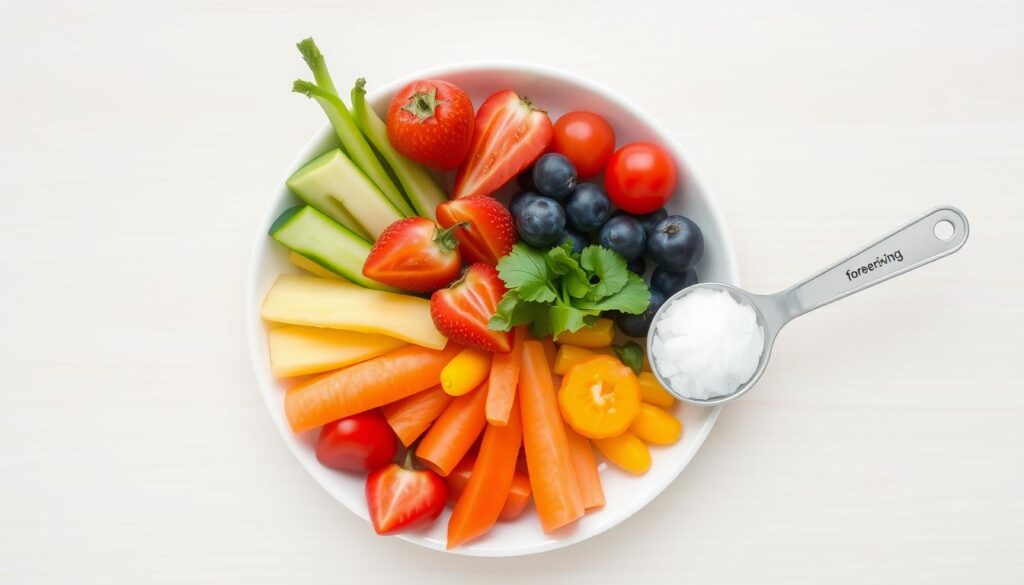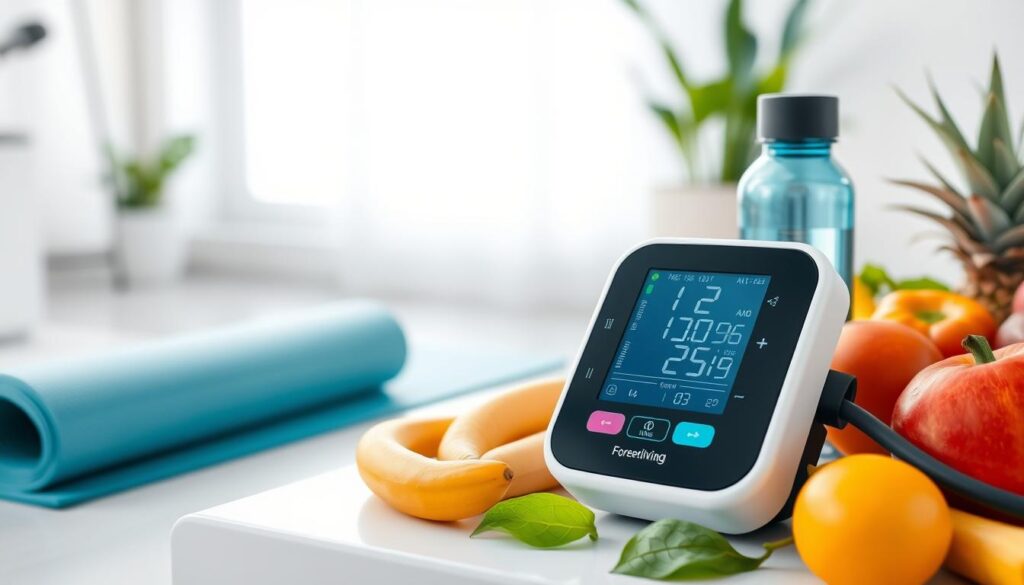Do you know that your blood pressure can be hazardous to your heart and health, which might be more harmful than a slow burning time bomb? A common condition in the modern age is high blood pressure or hypertension. As a result, the risk of getting heart problems, strokes, or even kidney disease increases. Still, a lot of people are not even aware that they are hypertensive as it does not present any typical symptoms.
But there is a bright side to this. You can change the odds in your favor. Adopting healthy lifestyle habits such as regular blood pressure checks and dieting can go a long way. These measures are vital in combating this significant risk factor to the heart.
Key Takeaways
- High blood pressure is the commonest heart disease risk factor and also the most common risk factor for stroke but is not diagnosed in many cases.
- Lifestyle changes, A few alterations in the regimen including observing a proper diet and engaging in physical activities can be quite effective in bringing about a drastic dip in blood pressure levels and the use of drugs.
- One of the most important measures to managing hypertension is making sure that blood pressure is monitored on a frequent basis.
- Consuming a relatively low sodium intake and taking a diet that is diverse and contains a lot of different nourishments may assist with the regulation of arterial blood pressure.
- Adopting a healthy life with frequent exercise and relaxation habits can also help manage blood pressure levels.
Understanding Blood Pressure: Key Information and Relevant Measurements
Maintaining healthy blood pressure is very important for the heart. Blood pressure is measured in mmHg. Some two numbers represent it, the systolic (the upper number) and the diastolic (the lower number). The systolic number depicts the maximum pressure that is achieved in the arteries when the heart pumps.
| Blood Pressure Range | Systolic (mm Hg) | Diastolic (mm Hg) |
|---|---|---|
| Normal | Less than 120 | Less than 80 |
| Elevated | 120-129 | Less than 80 |
| High Blood Pressure (Stage 1) | 130-139 | 80-89 |
| High Blood Pressure (Stage 2) | 140 or higher | 90 or higher |
| Hypertensive Crisis | Higher than 180 | Higher than 120 |
Keeping our blood pressure healthy is vital for our heart. By knowing the importance of blood pressure numbers and monitoring, we can manage our blood pressure. This reduces the risk of hypertension and promotes cardiovascular health.
The Connection Between Weight Management and Blood Pressure
Keeping a healthy weight is key to managing blood pressure. Being obese, with a BMI of 30 or more, greatly increases the risk of high blood pressure. Excess weight, especially around the waist, puts extra strain on your heart and blood vessels, raising blood pressure.
Research indicates that losing 5-10% of your body weight can greatly lower blood pressure. Losing 2.2 pounds can decrease blood pressure by about 1 mm Hg. Waist size is also critical, with men over 102 cm and women over 89 cm at higher risk.
To reach a healthy weight, aim to lose 1-2 pounds a week. This is a safe and achievable rate. Eat protein-rich foods to stay full and include at least five servings of fruits and vegetables daily to protect your heart.
Controlling portion sizes is essential. Use smaller plates, weigh foods like pasta and rice, and eat slowly to understand when you’re full. Setting realistic weight loss goals and having support can help you stay on track.
| BMI Category | BMI Range |
|---|---|
| Underweight | Less than 18.5 |
| Healthy Weight | 18.5 – 24.9 |
| Overweight | 25 – 29.9 |
| Obese | 30 – 35 |
| Very Obese | Over 35 |
Remember, achieving and maintaining a healthy weight is one of the most effective ways to control your blood pressure and reduce your risk of cardiovascular health issues.
Nutrition Strategies for Optimal Blood Pressure Control
Keeping a healthy diet is key to managing blood pressure. The DASH diet and the Mediterranean diet are two approaches that work well. They help lower blood pressure.
DASH Diet Principles
The DASH diet was created in the early 1990s by the National Heart, Lung and Blood Institute in the USA. It focuses on whole grains, fruits, vegetables, and lean proteins. It also limits red meat, sodium, sweets, and sugary drinks.
By sticking to the DASH diet, people can see their blood pressure drop by 4 to 5 mm Hg.
Mediterranean Diet Benefits
The Mediterranean diet is full of whole grains, fruits, vegetables, and nuts. It also uses olive oil a lot. This diet is good for blood pressure because it includes lean proteins like fish and poultry.
It also means eating less red meat, processed foods, and sugary items.
Potassium-Rich Foods
- Potassium-rich foods, such as beetroot juice, spinach, and bananas, help balance sodium’s effect on blood pressure.
- Try to eat 3,500 to 5,000 mg of potassium each day. This can lower blood pressure by 4 to 5 mm Hg. Always check with a healthcare professional about your potassium needs.
Adding these nutrition tips to your daily life can help control blood pressure. It’s a big step towards a healthy heart and blood vessels.
Salt and Sodium: Finding the Right Balance
Keeping a healthy sodium intake is key for blood pressure control and heart health. The advice is to not have more than 2,300 milligrams of sodium daily. For most adults, the goal is 1,500 milligrams. Cutting down on sodium can lower blood pressure by 5 to 6 mm Hg.
To cut down on sodium, read food labels well. Choose foods with less sodium and eat fewer processed foods. Don’t add table salt and cook at home more often to control sodium.
- The minimum daily need for sodium is about 500 milligrams.
- The limit for sodium intake is 2,300 mg daily, or about 1 teaspoon of salt.
- Snacks, sauces, dressings, and processed meats should have 200 mg of sodium or less per serving.
- Ready-to-eat meals should have 600 mg of sodium or less per serving.
By choosing to eat less sodium, you can help manage your cardiovascular health and lower blood pressure. This simple change, along with other lifestyle changes, can greatly improve your health.

“Cutting out just 1,000 milligrams of sodium a day can lead to improvements in blood pressure and heart health.”
Blood Pressure, Lifestyle and Eat Healthy Food
Keeping a healthy lifestyle and balanced diet is key to controlling blood pressure. By adopting sustainable eating habits and planning meals wisely, you can manage your blood pressure. This helps lower the risk of heart diseases.
Creating Sustainable Eating Habits
Eating a diet full of fruits, vegetables, whole grains, and lean proteins is vital. Include foods like leafy greens, berries, oatmeal, and fatty fish in your meals. Remember to control portion sizes and eat balanced meals all day.
Meal Planning for Blood Pressure Control
- Plan your meals ahead to ensure a balanced diet that supports healthy blood pressure.
- Add heart-healthy foods like fruits, vegetables, whole grains, and lean proteins to your meals.
- Reduce high-sodium, high-fat, and high-sugar foods, which can raise blood pressure.
Smart Food Choices
Choosing the right foods is crucial for managing blood pressure. Choose low-sodium, high-potassium foods like canned, dried, or frozen fruits and vegetables. Always check food labels to avoid high-sodium and saturated fats. The Heart-Check mark by the American Heart Association helps pick healthier options.
| Blood Pressure-Friendly Foods | Foods to Limit |
|---|---|
|
|
By choosing the right foods and adding blood pressure-friendly foods to your diet, you can manage your blood pressure. This improves your heart health.
Exercise and Physical Activity Guidelines
Regular physical activity is key to keeping blood pressure healthy. Aerobic exercises can lower blood pressure by 5 to 8 mm Hg. Aim for 150 minutes of moderate activity each week, like brisk walking or cycling.
For those who prefer more intense workouts, try high-intensity interval training (HIIT). It mixes short, intense periods with lighter activity. This boosts cardiovascular health and helps control blood pressure.
Don’t forget to include strength training exercises at least twice a week. Building muscle helps with cardiovascular health and blood pressure control.
Before starting a new exercise routine, talk to a healthcare professional. This is especially important for those with medical conditions. They can offer tailored advice for safe and effective exercise to manage blood pressure.
| Type of Physical Activity | Recommended Duration |
|---|---|
| Moderate-Intensity Aerobic Activity | At least 150 minutes per week |
| Vigorous-Intensity Aerobic Activity | At least 75 minutes per week |
| Muscle-Strengthening Activities | At least 2 days per week |
Regular physical activity and following these guidelines can greatly help keep blood pressure healthy. It promotes cardiovascular health and supports exercise as a vital part of a balanced lifestyle for managing blood pressure.
Stress Management and Sleep Quality
Living a healthy life is more than just eating right and exercising. It’s also about managing stress and getting good sleep. These two things are key for your heart health.
Relaxation Techniques
Stress can raise your blood pressure. So, it’s vital to find ways to handle it. Try deep breathing, meditation, or yoga to relax. See what works for you.
Sleep Hygiene Tips
- Make sure to sleep 7-9 hours each night. Stick to a sleep schedule and have a calming bedtime routine.
- Keep your bedroom cool, dark, and quiet. Avoid screens before bed.
- Don’t drink caffeine or alcohol close to bedtime. They can mess with your sleep.
- If sleep problems persist, talk to a doctor. They can help with sleep disorders like sleep apnea or insomnia.
By managing stress and focusing on sleep, you can improve your health. Small changes can make a big difference in your well-being.
Lifestyle Modifications Beyond Diet
While a healthy diet is key for blood pressure control, other lifestyle changes help too. Quitting smoking is a big step to lower blood pressure and heart disease risk. Smoking narrows blood vessels and puts more strain on your heart.
It’s also important to drink alcohol in moderation. Too much alcohol can increase blood pressure and make blood pressure meds less effective. Stick to one drink a day for women and two for men.
Checking your blood pressure at home regularly is crucial. Also, seeing your healthcare provider often helps keep your blood pressure in check.
The Importance of Physical Activity
Regular exercise can greatly lower your blood pressure. Activities like brisk walking, cycling, or swimming can reduce blood pressure by about 5/3 mmHg. Being more physically fit also lowers the risk of high blood pressure.
- Try to do at least 2.5 hours of moderate to high-intensity exercise each week for better blood pressure.
- Even losing 5-10% of your weight can help lower blood pressure if you’re overweight or obese.
Stress Management and Sleep Quality
Stress and poor sleep can raise blood pressure. Using relaxation methods like meditation, deep breathing, or yoga can help manage stress. Good sleep habits, like a regular sleep schedule and a comfy bedroom, also support healthy blood pressure.
“Making lifestyle modifications beyond just diet can have a profound impact on blood pressure control and overall cardiovascular health.”
By focusing on quitting smoking, drinking less, monitoring blood pressure, and staying active, you can manage your blood pressure well. Also, don’t forget about stress management and getting enough sleep. This approach can lower your heart disease risk.

Conclusion
Managing blood pressure is a long-term effort. It involves eating well and making lifestyle changes. By managing weight, eating right, exercising, reducing stress, and sleeping well, you can control your blood pressure.
It’s important to keep an eye on your blood pressure and work with your doctor. Small, lasting changes can make a big difference. A healthy lifestyle can greatly improve your wellbeing and reduce health risks.
Improving your blood pressure and heart health takes time and effort. But the benefits are huge. Stay positive, celebrate your successes, and keep up your healthy habits for a better future.
FAQ
What are the consequences of high blood pressure?
High blood pressure can lead to serious health issues. It increases the risk of heart disease, stroke, and kidney disease. Many people don’t notice symptoms, so it often goes undiagnosed.
How is blood pressure measured and what are the normal levels?
Blood pressure is measured in millimetres of mercury (mm Hg). It has two numbers: systolic (top) and diastolic (bottom). Normal blood pressure is below 120/80 mm Hg.
What are the risk factors for high blood pressure?
Several factors can increase your risk. These include age, family history, obesity, and a sedentary lifestyle. High salt intake also plays a role. Regular monitoring is key for early detection and management.
How does weight affect blood pressure?
Weight gain often raises blood pressure. Losing weight can help control it. For each kilogram (2.2 pounds) lost, blood pressure may drop by about 1 mm Hg.
What are the recommended diets for lowering blood pressure?
The DASH and Mediterranean diets are good for lowering blood pressure. They focus on whole grains, fruits, vegetables, low-fat dairy, and lean proteins.
How much potassium do I need for blood pressure control?
Aim for 3,500 to 5,000 mg of potassium daily. This can lower blood pressure by 4 to 5 mm Hg. Always consult a healthcare professional about your potassium intake.
How much sodium should I limit for better blood pressure?
Limit sodium to 2,300 mg per day or less. For most adults, aim for 1,500 mg. Reducing sodium can lower blood pressure by 5 to 6 mm Hg.
How much exercise is recommended for blood pressure control?
Regular aerobic exercise can lower blood pressure by 5 to 8 mm Hg. Aim for 150 minutes of moderate-intensity activity weekly. Always consult a healthcare professional before starting a new exercise programme.
How can stress and sleep impact blood pressure?
Long-term stress can contribute to high blood pressure. Identify stress triggers and find ways to cope. Prioritise sleep, aiming for 7-9 hours each night.
What other lifestyle changes can help control blood pressure?
Quitting smoking and limiting alcohol can significantly lower blood pressure. Regularly monitor your blood pressure at home and attend check-ups with your healthcare professional.
